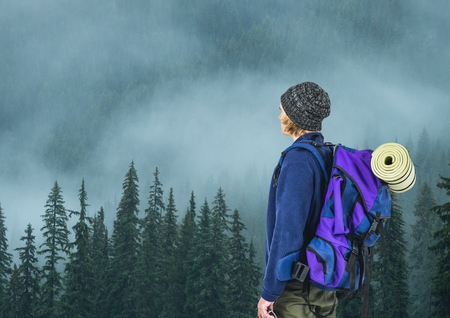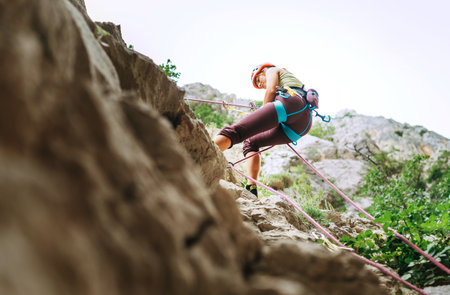1. Understanding Group Safety on the Trail
Hiking is a favorite pastime for many families and friends in the United States, offering a great way to connect with nature and each other. When heading out together, group safety becomes a top priority. This is because hiking with loved ones means you’re not just responsible for your own well-being but also for everyone in your group. American hiking culture strongly values preparation, teamwork, and looking out for one another. Whether you’re exploring national parks or local trails, understanding why group safety matters helps ensure every outdoor adventure is enjoyable and safe.
Why Group Safety Matters
When you hike as a group, there are unique benefits and risks that come into play. For instance, you have more eyes to spot hazards and extra hands to help if someone gets hurt. However, there’s also the challenge of keeping everyone together and making sure everyone is prepared.
| Benefit | How It Helps |
|---|---|
| Shared Responsibility | Everyone looks out for each other, increasing overall safety. |
| Preparedness | More people can carry supplies like water, snacks, and first aid. |
| Moral Support | Encouragement from friends and family keeps spirits high. |
| Problem Solving | A group can brainstorm solutions quickly if issues arise. |
The US Approach to Hiking Safety
Across the United States, hikers are encouraged to plan ahead and communicate openly within their groups. Before hitting the trail, it’s common practice to discuss the route, set ground rules, and make sure everyone knows what to expect. Many hiking organizations promote the idea of “leave no one behind,” meaning the group moves at the pace of its slowest member so nobody gets separated or lost. This spirit of cooperation is at the heart of American hiking culture and plays a big role in making hikes safer for all participants.
2. Planning Ahead as a Team
Why Team Planning Matters
Hiking with family and friends is a wonderful way to connect, but it also comes with shared responsibilities. When everyone helps plan the trip, you reduce the risk of surprises and make sure everyone feels included and prepared. Working together as a team sets the stage for a safer and more enjoyable adventure.
Route Research: Know Before You Go
Before heading out, its important to research your hiking route. Check trail length, difficulty, elevation gain, and local weather conditions. Everyone should have a say in picking a trail that matches the group’s abilities. This not only ensures safety but also helps avoid frustration or fatigue during the hike.
| Trail Factor | Why It Matters | Who Should Check |
|---|---|---|
| Distance & Elevation | Choose what fits everyones fitness level | The whole group |
| Weather Forecast | Avoid dangerous conditions or dress appropriately | At least one group member (share info) |
| Trail Conditions | Know about closures or hazards ahead of time | The planner (share updates with all) |
| Maps & Navigation Tools | No one gets lost if everyone knows the route | Everyone should have access |
Gear Preparation: Divide and Conquer
Packing the right gear is essential for group safety. Make a checklist together and divide up items so no one person has to carry everything. Double-check that each person’s backpack includes personal essentials like water, snacks, appropriate clothing, and any needed medications. For shared items—like first aid kits, emergency blankets, or navigation tools—assign responsibility so nothing gets left behind.
| Personal Gear | Group Gear (Assign to Someone!) |
|---|---|
| Water bottle/hydration pack Sunscreen Snacks Personal medication Rain jacket/layers |
First aid kit Trekking map/compass/GPS Extra food/water Emergency blanket Whistle |
The Power of Pre-Hike Communication
Good communication before your hike makes everything run smoother. Hold a quick meeting—either in person or via group chat—to talk through the plan. Discuss who’s bringing what, double-check meeting times and locations, and review the route together. Make sure everyone has each other’s contact information and agrees on what to do if someone needs help or wants to turn back early.
Checklist for Pre-Hike Team Communication:
- Confirm everyone understands the trail route and meeting points.
- Share emergency contacts and phone numbers.
- Discuss what to do if someone gets separated from the group.
- Set expectations for pace and rest breaks.
A little planning goes a long way! When every member pitches in before you hit the trail, you’re setting up your group for a safe and memorable day outdoors.

3. Communication and Staying Connected
When hiking with family and friends, staying in touch is key to keeping everyone safe. Good communication helps your group stay together, avoid confusion, and react quickly if someone gets lost or needs help. Here are some simple ways to make sure everyone is accounted for during your outdoor adventure.
Set Clear Meeting Points
Before you hit the trail, pick a few easy-to-find spots along your route where everyone can regroup. This helps if your group splits up or if someone lags behind. Common meeting points can be a trail intersection, a noticeable landmark, or a rest area.
| Meeting Point | Why Its Helpful |
|---|---|
| Trailhead | Easy to remember start and end location for all hikers |
| Scenic Overlook | A popular spot where people naturally stop and regroup |
| Creek Crossing | A natural pause point that keeps the group together before moving on |
Use Two-Way Radios or Cell Phones
Cell service isn’t always reliable in the mountains or remote parks, so two-way radios can be a real lifesaver. If you know there’s good coverage, make sure everyone has their phone charged. Otherwise, bring radios and agree on which channel to use. Even young kids can learn to use a walkie-talkie with a little practice.
Pros and Cons of Communication Devices
| Device | Pros | Cons |
|---|---|---|
| Cell Phone | Familiar and easy to use; great where there’s service | No signal in remote areas; battery may drain fast |
| Two-Way Radio | No need for cell service; instant group connection | Limited range; needs fresh batteries |
Establish Regular Check-Ins
Create a system so everyone checks in at set times or locations. This could mean counting heads every half hour, checking in at each meeting point, or just making sure you can see everyone along the trail. Assign one person as the “sweeper” who stays at the back to make sure no one falls behind.
Sample Check-In Plan for Your Group Hike:
- Before starting: Make sure everyone knows the plan and who is leading and sweeping.
- At every major stop: Do a headcount and ask if anyone needs a break or help.
- If separated: Head to the next meeting point or contact via radio/phone immediately.
This teamwork-focused approach ensures that no one feels left out and that everyone enjoys the hike safely together.
4. Responding to Emergencies Together
Staying Calm and Acting Fast
When youre hiking with family and friends, emergencies can happen in an instant. Maybe someone twists an ankle, gets stung by a bee, or feels dizzy from the heat. In these moments, its important that everyone knows how to stay calm and work together. The American spirit of teamwork shines brightest during these unexpected situations. Everyone plays a role in keeping the group safe and helping each other out.
Basic First Aid Everyone Should Know
| Emergency Situation | First Steps | Team Action |
|---|---|---|
| Sprained Ankle | Sit down, elevate the foot, apply a cold pack if possible | One person supports the injured hiker, others look for help or prepare to walk back slowly as a group |
| Bee Sting/Allergic Reaction | Remove the stinger, wash the area, use an epinephrine auto-injector if needed | Someone calls for help if symptoms are severe, others keep the person calm and watch for reactions |
| Heat Exhaustion | Move to shade, give water, loosen tight clothing | The group rests together, one person fans the affected hiker while others check for signs of improvement |
| Getting Lost | Stop walking, stay together, try to retrace steps on the map or GPS device | Divide tasks: some call for help, others look for landmarks without leaving the group behind |
Emergency Protocols: Know Before You Go
Before heading out, talk as a group about what to do if someone gets hurt or lost. Make sure everyone knows who has the first aid kit and how to use it. Share cell phone numbers and download offline maps. Assign roles—maybe one person is in charge of navigation while another keeps track of supplies. This kind of planning reflects American values of preparedness and looking out for each other.
The Buddy System: Strength in Numbers
The buddy system is simple but powerful: always hike with at least one other person. Check in with your buddy often—are they drinking enough water? Do they seem tired? Keeping tabs on each other helps catch small problems before they become big emergencies.
Quick Tips for Team Emergency Response:
- Stay together—never leave someone alone if theyre hurt or scared.
- Keep communication open—talk about how everyone is feeling during the hike.
- If you need help, make noise (whistle, shout) and use bright clothing or gear to be seen.
- Follow Leave No Trace principles even during emergencies; respect nature while staying safe.
Working as a team not only helps everyone stay safe—it builds trust and lasting memories out on Americas beautiful trails.
5. Creating a Positive and Supportive Hiking Experience
Focusing on Group Morale and Team Spirit
When hiking with family and friends, the group’s morale can make or break the adventure. In American outdoor culture, it’s common to encourage each other, share jokes, and celebrate small wins—like reaching a viewpoint or spotting wildlife. A positive attitude helps everyone push through tough spots and creates memorable moments together.
Inclusivity for All Ages and Abilities
It’s important to make sure that every group member feels welcome, no matter their age or fitness level. Good planning means picking trails suitable for everyone and being ready to adapt if someone needs more breaks. Below is a simple guide for including all hikers:
| Group Member | Support Tips |
|---|---|
| Young Kids | Plan short hikes, bring snacks, play games along the trail |
| Seniors | Select gentle paths, offer trekking poles, schedule rest stops |
| Beginners | Share basic safety tips, check in often, set a comfortable pace |
| Experienced Hikers | Encourage leadership roles, let them help with navigation |
Fostering a Fun and Safe Environment
Safety is always the top priority in American hiking traditions. This includes sticking together, looking out for each other, and making sure no one feels left behind. Fun activities like taking group photos or having a friendly scavenger hunt can keep spirits high while maintaining awareness of everyone’s well-being.
Quick Tips for a Positive Group Hike:
- Start every hike with a group check-in about the route and safety plans.
- Make space for everyone to share what they’re excited about—or nervous about.
- Rotate who leads so everyone feels involved.
- Praise each other for teamwork and effort, not just speed or distance.
- Create traditions like sharing trail snacks or stories at rest stops.
The Heart of Group Hiking: Togetherness
The best hiking experiences are built on support, kindness, and shared adventure. By focusing on group morale, including everyone, and keeping things fun yet safe, you’ll create memories that last long after you leave the trail.


